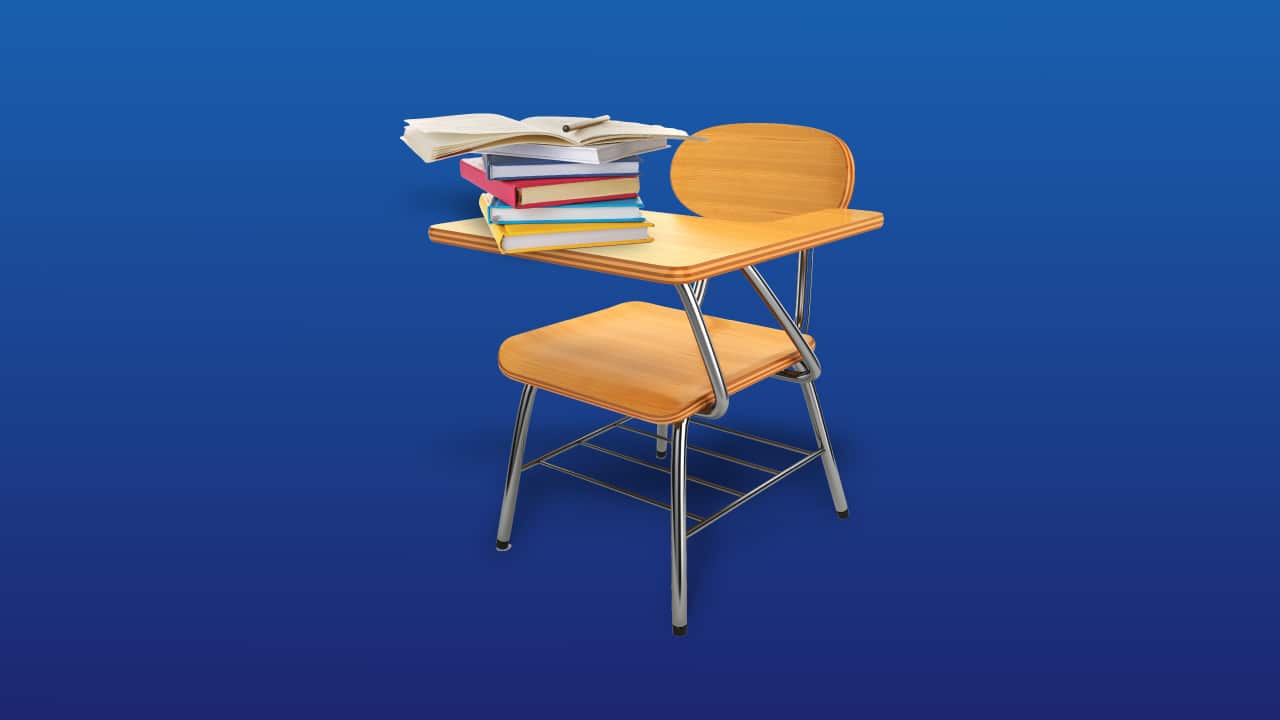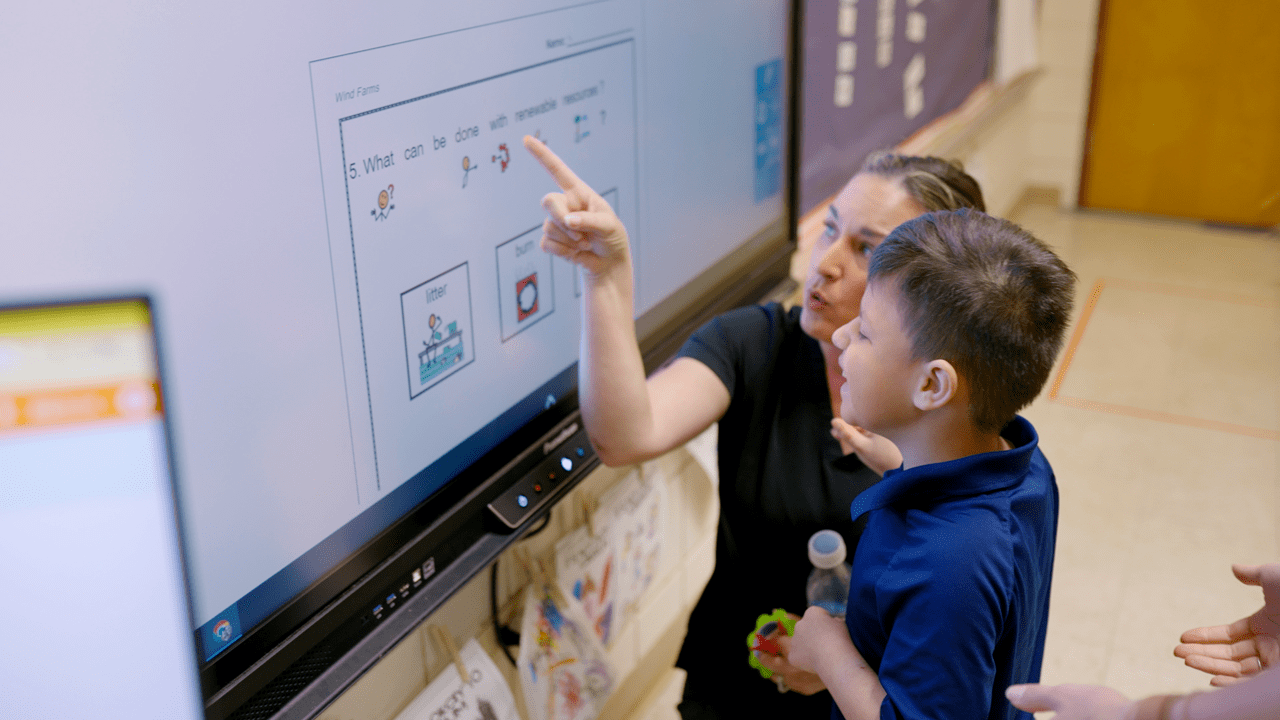Research has shown that movement, also called kinesthetic learning, has a big impact on the development of literacy skills, including the retention of key definitions. Specifically, students are much more engaged and focused when instruction incorporates movement, which increases their ability to process new information. In addition, by participating in experiences, students make deeper connections. The old Chinese proverb is true: “I hear and I forget. I see and I understand. I do and I remember.”
So, it seems only natural that students should engage in movement games to get new words into their long-term memory for use when analyzing texts.
In the physical classroom
Definitions
In my classroom, I always start with definitions. Then, as we go over what the words mean, a student attaches a card with the word, its definition, and an image representing the definition to a bulletin board. The combination of the words, image, and movement incorporates all three modalities of learning to help reach all students—a key factor in vocabulary skill development.
Dominoes
After that, we practice using the words by playing various games like dominoes. The dominoes have the same words, definitions, and images as what are on the bulletin board. In pairs students practice matching up words to their definitions. The first round is just to get used the idea of the game. The second round is all about the fastest pair to finish. A little friendly competition is always fun!
Vocabulary Tic‑Tac‑Toe
This game is a class favorite and gets the entire group engaged and involved! This is how it is played:
- Divide the class into two teams. One is the “x” team and one is the “o” team.
- Draw a tic‑tac‑toe board on the whiteboard.
- Ask a vocabulary question of the first member of the “x” team. If they are correct, then they place an x on the board! If they are incorrect, they simply lose the chance to place an x on the board.
- Now repeat #3 with the “o” team.
- Continue with each member of both teams until you have a winner with three in a row! You might even give bonus points as a prize.
Slide
Last but not least, we play a game I invented called “Slide.” Two rows of students face each other. One row has questions and answers on index cards. The other row must try to answer the questions. I start with the first pair who face one another: If a student answers the question correctly, they switch places. Soon I call, “Slide!” and the answer people move one space to their right to face a new partner and question. I keep calling “Slide” until I believe that all questions and answers have been revealed enough times that the students will retain what they’ve learned.
All of the physical classroom activities covered above have two important things in common: They are games that require students to move and participate. We all know that childhood obesity is on the rise, so we know that students need more movement in their lives, but did you know that movement also boosts brain power? Studies have shown that movement helps students retain more information. So, the more movement we can incorporate into something like vocabulary instruction, the better the outcomes will be!
In the digital classroom
Gimkit
This is a game that all students can play from their own homes but still go against their classmates! They answer questions on their own device and earn Gimkit “cash” for purchasing upgrades or powerups. There’s a leaderboard, and students love to see themselves advancing up the board! A variety of questions can be entered into the game, so the skills that can be learned are endless. I like to use it with vocabulary because Gimkit will repeat the questions several times during a game. No “one and done” here!
Jeopardy
An old favorite, Jeopardy can be played during a live lesson with students. There are many free generators online to help you make your game. Besides making my own with a presentation template, I love using the online game Factile—it even has a remote buzzer!
Quizlet Live
If you’ve ever played this in the classroom, then you know how excited students are to play this game! Once you enter your students into your Quizlet class, the platform randomizes the students into groups. The groups compete to be the first to finish matching all the words with the definitions. Because the correct answer only appears on one person’s screen in each group, each student must pay attention and contribute to win. This game can easily be played remotely during a live lesson. I’m sure all you’d have to do is say, “We’re playing Quizlet Live!” to have nearly perfect attendance!
Summary
The fundamental reason to teach vocabulary is that it is a key to reading comprehension. Being able to understand what the words say is essential to understanding any text as a whole. Using various movement strategies not only helps the struggling learner engage with new words, it also helps them retain the definitions. The kinesthetic connections that students make while engaging in movement not only will solidify their understanding of the words but also will help them remember the definitions for use in the future. This leads to success during literature studies because they will have a stronger base of knowledge. And this will put all students on the path to mastering the standards.



